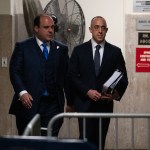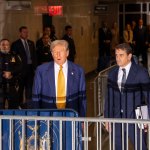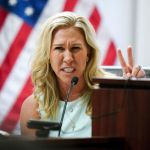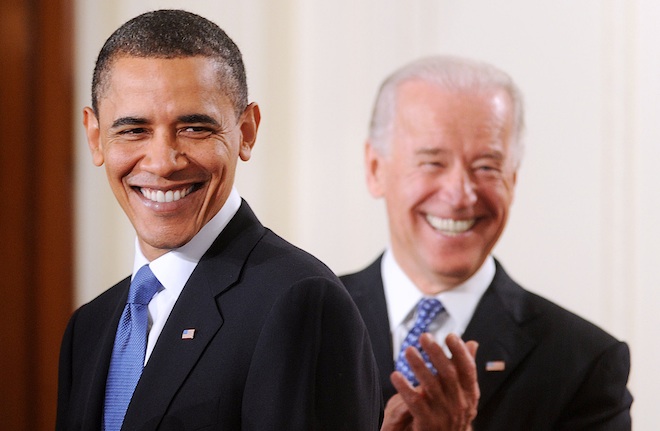Everything that’s supposed to happen in politics this year, and everything that has happened for the last several months, has been premised on the tacit, but seemingly safe assumption: The economy will remain weak for years.
This has underlined Congressional jobs bill theatrics, campaign rhetoric about Obama’s record, debates about who’s to blame for high unemployment, and which party best represents the interests of the middle class.
But what if that assumption is wrong?
A contrarian school of thought holds that it is wrong — and its proponents have a growing cache of evidence to back them up.
If these evidence-based optimists are correct the political implications will be vast — as we all saw on Friday when a promising jobs report from the Department of Labor alighted into the political consciousness the possibility that a robust economic recovery could take hold imminently, and thus overturn a year’s worth of conventional wisdom about the trajcectory of the 2012 election.
Karl Smith, an economist at the University of North Carolina and author of the Modeled Behavior blog, is a major proponent of this forecast — what you might call Recovery Winter. Slate‘s Matt Yglesias explained it here. I went straight to the source to hear why Smith concluded that a real recovery was finally looming, and decided to take his prediction public at the considerable risk of embarrassment if the gloom-and-doomers turn out to be right.
Smith’s theory isn’t new — it’s an application of the widely held understanding of how all recessions ultimately come to an end. Pent up demand overtakes people’s aversion to spending and investment, idle resources get put to use, and the country’s economic engine revs up. He just thinks we’ve reached that point now.
“I first started to think that a recovery was imminent, that we’d see a recovery coming soon was probably the middle of 2011,” Smith says.
Specifically, Smith noticed that apartment vacancies were falling, while the apartment stock remained tight. He also noticed that the nation’s auto fleet was aging extremely quickly.
“There were more older cars than there were newer cars,” Smith said. “That means not only is the auto fleet old, but it’s going to get really old really fast.”
The recession did a lot of harm to the country, but it didn’t freeze the size of the population. It didn’t eliminate peoples’ need to travel and commute. And it didn’t change the fact that people need places to live — even if their homes have been foreclosed.
“Those two parts of the economy were going to show pent up demand,” Smith reasoned. “I expected to see rents rising and used car prices rising.” Sure enough, rents started rising, used car prices started skyrocketing. That, Smith realized, would push people into buying new cars and developers into building new apartment complexes.
So far, he’s been proven correct, with potentially huge implications. “Houses and cars are the main pieces of capital we have in the economy,” Smith says, and economic theory holds that when people finally start reaching under their mattresses to invest in them, it can set off a virtuous cycle of growth, and revitalize a weakened economy.
“There’s some return on capital in the economy — when you build a new building or piece of machinery it has some rate of return,” Smith explained. That potential return is why in normal times people take risks instead of just hoarding cash — it sets what’s known as the “natural rate of interest.” During the recession, that rate actually became negative, leaving people content to let their money idle at zero interest rather than invest it in the economy.
Years later, things need to be replaced, the housing supply becomes inadequate, and demand increases, pushing that rate up. Smith thinks it’s now higher than zero — and barring an external shock, should be enough to usher a recovery.
“Watching the rents rise, watching the used car prices rise, I thought at some point this is going to catch — it’s going to be a self-reinforcing cycle,” Smith said. “Eventually any recession is going to end from this very effect. Once things get old enough people are going to go out and buy new stuff.”
If that happens in the next few months, throw everything you think you know about 2012 out the window. Republicans have one game plan for beating Obama and it rests on voters believing the country’s best days are behind it. They’re now starting to grapple with their options if by mid-year, the unemployment rate is falling fast toward eight percent.
Most major economic forecasts predict anemic growth all year — partly because models don’t reflect this dynamic, and partly because experts have grown gun-shy about wrongly claiming to see green shoots. But the numbers may be starting to tell a different story. December’s jobs numbers showed unemployment dropping again to 8.5 percent. The Congressional Budget Office didn’t expect us to hit that level until the final quarter of the fiscal year. The White House’s Office of Management and Budget predicted an average rate of 9 percent for the full year.
Some forecasters — including at Deutche Bank — have started coming around. But most have not.
“Most bank economists are more conservative than I am,” Smith says. “I think — my honest take on them is that they do sort of what I call charting, you just sort of project trends in the past into the future. Since growth has been sort of slow, you expect it to be slow in the future. That’s sort of crude, but that’s essentially what the econometric model says, and the computer predicts. The risk of going with me is that if I’m wrong, then I’m completely wrong. It something that came out of my head, it’s not a computer model.”
There are X-factors. For instance, if the European debt crisis spreads financial contagion to U.S. banks, it will tighten credit here. And all the demand in the world for new cars and apartment complex won’t translate into production if banks aren’t willing to help buyers finance them. That’s the downside risk. And, of course, Smith could be painting a false dawn.
To be fully convinced that he made the right call, he says he’ll need to see one more jobs report that reflects accelerating job employment. Friday’s report concluded that 200,000 new jobs were created. “if we go from 200 to 250 and stayed at 250 or a bit more for a few months then the computers would start to agree with me, most of the models would switch their projections,” Smith said. “I think that it’s going to happen but if we have reports like that I think it’ll be convincing for most people.”










